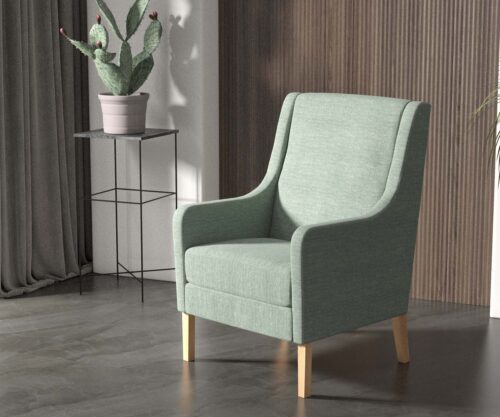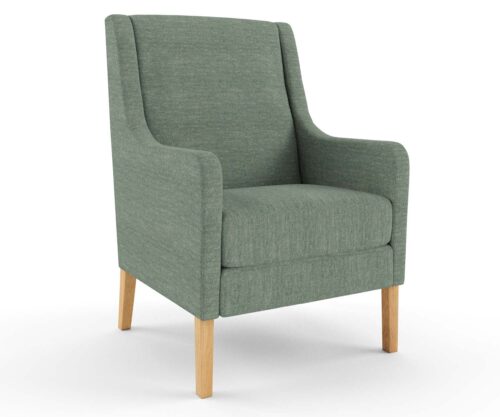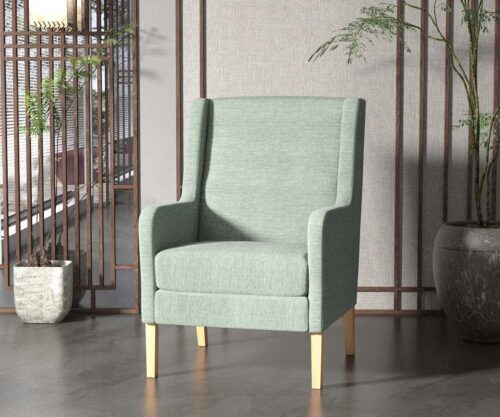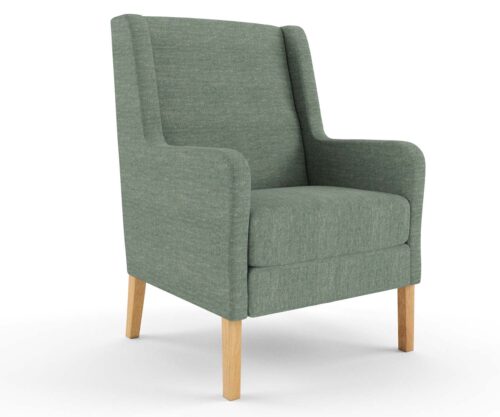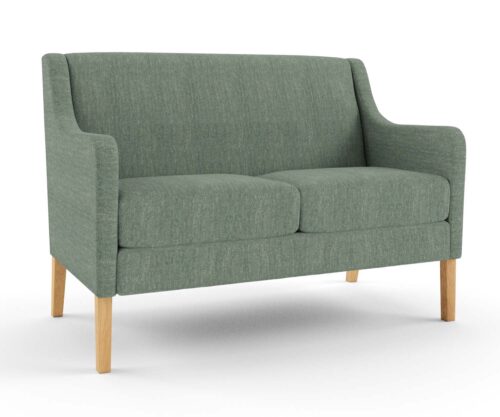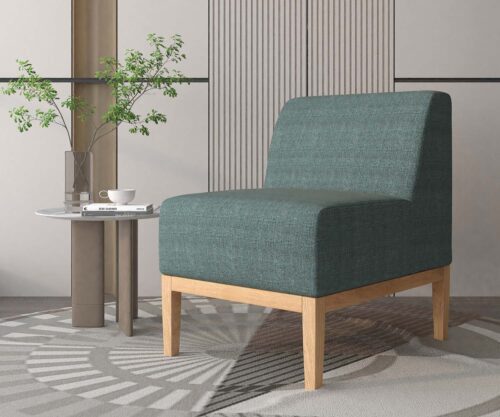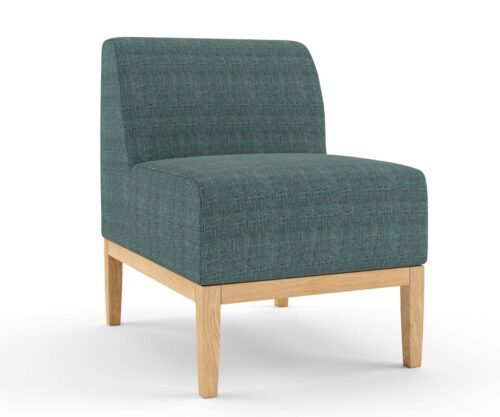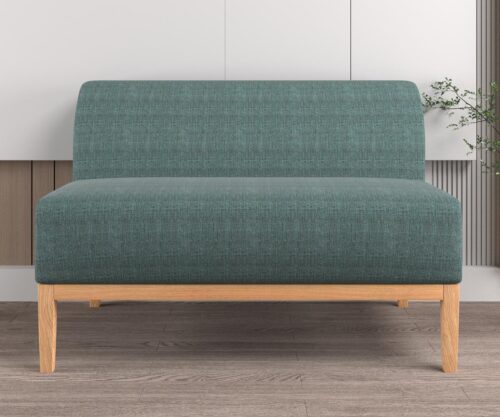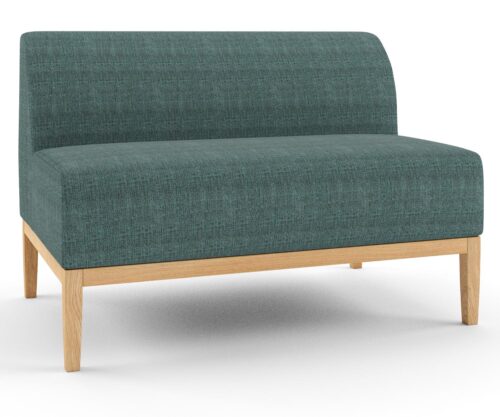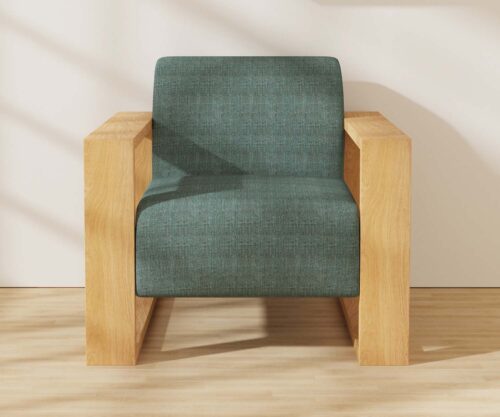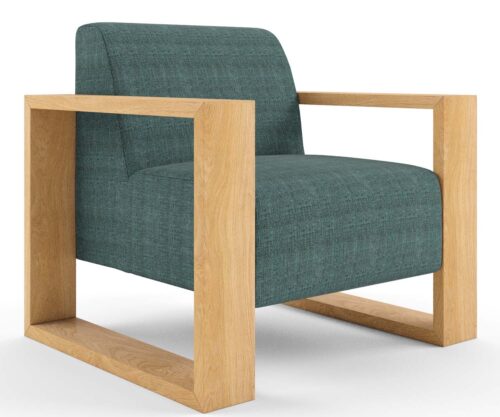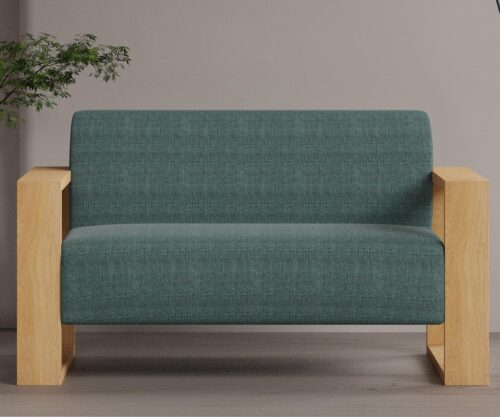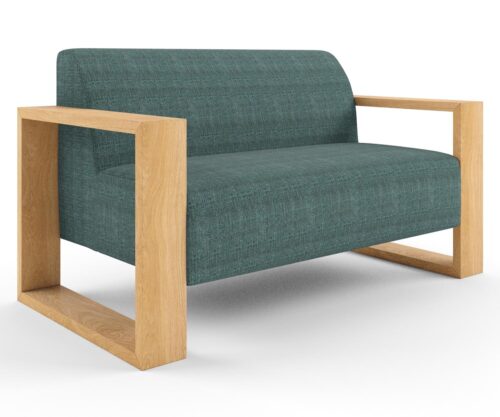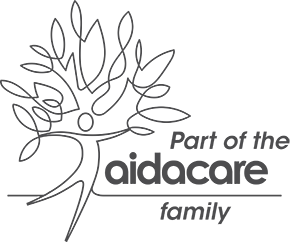Revitalizing Australian Aged Care Service Environments: How Furniture Can Enhance the Resident Experience

As the demand for aged care services in Australia continues to grow, it’s becoming increasingly important to focus on providing high-quality care that not only meets the physical needs of residents but also enhances their overall experience. One key element of this is the design and layout of aged care service environments. In particular, the aged care furniture used in these spaces can have a significant impact on the resident experience, from promoting comfort and safety to creating a sense of community and connection.
In this article, we’ll explore the ways in which furniture can be used to revitalize aged care service environments in Australia. Additionally, we’ll discuss how this revitalization can contribute to better outcomes for both residents and staff.
We’ll look at some of the latest design trends and innovations in aged care furniture, and discuss the benefits of investing in high-quality, fit-for-purpose furniture solutions.
So, if you’re involved in aged care services in Australia, or simply interested in the latest trends in healthcare design, read on to discover how furniture can help enhance the resident experience.
The role of furniture in enhancing the resident experience
When it comes to aged care service environments, furniture is more than just a practical necessity. It has a crucial role to play in enhancing the resident experience and promoting better outcomes for both residents and staff. From creating a sense of comfort and safety to fostering social connections and promoting independence, furniture can make a significant difference to the quality of life of aged care residents.
One key factor to consider when selecting furniture for aged care facilities is the need for versatility. Aged care residents may have a range of physical needs and limitations. Therefore, it’s important to provide a selection of furniture designs as well as choosing furniture that can be easily adjusted to meet these needs. This might include adjustable beds, chairs with supportive cushions and armrests, and tables that can be raised or lowered to accommodate different heights.
Another important consideration is the need for durability. Aged care furniture needs to be able to withstand frequent use and potential damage, as well as being easy to clean and maintain. This means choosing materials that are both sturdy and easy to care for, such as vinyl or leather upholstery and solid wood or metal frames.
Ultimately, the goal of furniture in aged care service environments is to create a space that is comfortable, safe, and inviting for residents. By selecting furniture that meets these criteria, aged care providers can help to enhance the resident experience and promote better outcomes for all involved.
Key considerations when selecting furniture for aged care facilities
When selecting furniture for aged care facilities, there are several key considerations to keep in mind. These include the needs and preferences of residents, the requirements of staff and caregivers, and the overall design and layout of the facility.
One important factor to consider is the level of mobility of aged care residents. Some may require wheelchairs or walking aids, while others may have difficulty standing or sitting for extended periods of time. This means that furniture needs to be chosen with these needs in mind, with features such as adjustable heights and supportive cushions.
Another consideration is the need for safety and accessibility. Aged care residents may be at risk of falls or other accidents, so furniture needs to be chosen with safety features such as non-slip surfaces and sturdy frames. Additionally, furniture should be arranged in a way that allows for easy access and movement for both residents and staff.
Another important factor to consider is the overall design and aesthetic of the aged care facility. Furniture should be chosen to complement the existing décor and create a cohesive and welcoming space for residents. This might include selecting furniture in calming colours and patterns. Additionally, incorporating natural elements such as wood or plants can create a sense of warmth and comfort.
Ultimately, the key to selecting effective furniture for aged care facilities is to prioritize the needs and preferences of residents. Additionally, keeping in mind the practical requirements of staff and caregivers is crucial.
Examples of effective furniture designs in aged care settings
There are several innovative and effective furniture designs that are specifically tailored to the needs of aged care residents. These designs prioritize comfort, safety, and flexibility, while also incorporating elements of style and aesthetic appeal.
One example of effective aged care furniture design is the use of adjustable beds. These beds allow residents to easily adjust the height and angle of their sleeping surface, providing greater comfort and support for those with mobility issues or respiratory conditions. Additionally, many adjustable beds can be converted into chairs, providing a versatile and multi-functional piece of furniture.
Another effective design solution is the use of lift chairs. These chairs are designed to help residents with mobility issues to transition from sitting to standing, with features such as supportive armrests and non-slip surfaces. Lift chairs can be a valuable addition to aged care facilities, helping to promote independence and reduce the risk of falls and other accidents.
Finally, furniture that promotes social connection and community-building can be an effective way to enhance the resident experience in aged care settings. This might include communal dining tables, comfortable seating areas for socializing and relaxation, and outdoor furniture that allows residents to enjoy the natural environment.
By incorporating these and other innovative furniture designs into aged care facilities, providers can help to enhance the comfort, safety, and overall experience of residents.
The impact of furniture on resident well-being and quality of life
The impact of furniture on the well-being and quality of life of aged care residents cannot be overstated. From promoting comfort and relaxation to fostering social connections and promoting independence, furniture plays a crucial role in enhancing the resident experience.
One key benefit of effective furniture design is the promotion of comfort and relaxation. Aged care residents may spend a significant amount of time in their beds or chairs, so it’s important to choose furniture that is both comfortable and supportive. This can help to reduce the risk of pressure sores and other physical discomforts, while also promoting relaxation and restful sleep.
Another important benefit of furniture in aged care settings is the promotion of social connections and community-building. Communal dining tables, comfortable seating areas, and outdoor furniture can all help to create a sense of community and connection among residents. This contributes to reducing feelings of isolation and loneliness.
Finally, furniture can also play a crucial role in promoting independence and autonomy among aged care residents. Features such as adjustable heights and armchairs with supportive armrests can help residents to move and navigate their environment more easily, reducing the risk of falls and other accidents. Additionally, furniture that is designed to be multi-functional can help residents to perform a range of tasks independently, promoting greater self-esteem and confidence.
Overall, the impact of furniture on the well-being and quality of life of aged care residents is a crucial consideration for aged care providers. By selecting furniture that promotes comfort, safety, and social connection, providers can help to enhance the resident experience and promote better outcomes for all involved.
Collaborating with furniture manufacturers and suppliers to revitalize aged care environments
When it comes to revitalizing aged care environments through furniture upgrades, collaboration with furniture manufacturers and suppliers can be a valuable resource. These companies can offer expertise in the latest design trends and innovations. Additionally, they can provide guidance on budgeting, financing, and sustainability considerations.
Working with Australian furniture manufacturers and suppliers can also help to ensure that aged care providers are selecting furniture that is specifically tailored to the needs of their residents. By collaborating with these experts, providers can gain insights into the latest design solutions and innovations, as well as receiving guidance on how to select furniture that meets the practical requirements of staff and caregivers.
Ultimately, collaboration with furniture manufacturers and suppliers can be a valuable way to ensure that aged care environments are revitalized in a way that prioritizes the needs and preferences of residents, while also meeting the practical requirements of staff and caregivers.
Sustainability and environmental considerations in aged care furniture selection
The sustainability and environmental impact of aged care furniture is an important consideration for providers looking to revitalize their environments. By selecting furniture that is environmentally friendly and sustainable, providers can help to reduce their carbon footprint and promote a more sustainable future.
One way to promote sustainability in aged care furniture selection is to choose furniture that is made from eco-friendly materials. This might include furniture made from sustainable woods or recycled materials. Additionally, furniture that is designed to be easily disassembled and recycled at the end of its lifespan is a sustainable choice.
Providers should also consider the environmental impact of furniture transportation and delivery. By working with local suppliers and manufacturers, providers can help to reduce the carbon footprint associated with transporting and delivering furniture to their aged care facilities.
Overall, the sustainability and environmental impact of aged care furniture is an important consideration for providers. It is essential for those looking to revitalize their environments in a way that promotes the well-being of residents and staff, while also promoting a sustainable future.
Case studies of successful aged care facility revitalization through furniture upgrades
There are a number of case studies that demonstrate the effectiveness of furniture upgrades in revitalizing aged care facilities. These case studies highlight the importance of choosing furniture that is tailored to the needs and preferences of residents. Additionally, they emphasize the significance of meeting the practical requirements of staff and caregivers..
One example is the refurbishment of an aged care facility Armidale, which involved upgrading the furniture and décor to create a more modern and inviting space for residents. This included the installation of adjustable beds, lift chairs, and other furniture that prioritized comfort and safety. Additionally, it involved creating communal dining areas and outdoor spaces for socializing and relaxation.
Another example is the refurbishment of an aged care facility Victoria, which focused on creating a more sustainable and environmentally friendly environment for residents. This involved selecting furniture made from sustainable materials, as well as incorporating energy-efficient lighting and heating solutions to reduce energy consumption.
Overall, these case studies demonstrate the effectiveness of furniture upgrades in revitalizing aged care environments in a way that promotes the well-being and quality of life of residents and staff.
Prioritizing Furniture as a Key Aspect of Resident Care
In conclusion, furniture plays a crucial role in enhancing the resident experience in aged care service environments. From promoting comfort and safety to fostering social connections and promoting independence, furniture can make a significant difference to the well-being and quality of life of aged care residents.
To revitalize aged care environments in Australia, providers should prioritize the selection of furniture that is tailored to the needs and preferences of residents. Additionally, they should ensure that the chosen furniture meets the practical requirements of staff and caregivers. This might include choosing furniture that is versatile, durable, and eco-friendly. Also, it involves working with furniture manufacturers and suppliers to create a flexible and affordable financing plan.
Ultimately, by prioritizing furniture as a key aspect of resident care, aged care providers can help to enhance the resident experience and promote better outcomes for all involved.
FAQs About How Furniture can Enhance the Experience of Someone Living in Aged Care
How does furniture selection contribute to the overall experience of aged care residents?
Thoughtfully chosen furniture enhances the comfort, functionality, and aesthetics of living spaces, positively impacting the overall experience for aged care residents.
What role does comfort play in selecting furniture for aged care facilities?
Comfort is paramount in furniture selection, as it directly influences the well-being and satisfaction of residents. Ergonomically designed, comfortable furniture contributes to a positive living experience.
How can furniture design support the specific needs of aged care residents?
Furniture designed with features such as adjustable heights, supportive armrests, and easy-to-use mechanisms caters to the unique needs of elderly individuals, promoting independence and convenience.
Can furniture contribute to creating a homelike atmosphere in aged care settings?
Yes, choosing furniture with warm, inviting designs and comfortable aesthetics contributes to creating a homelike atmosphere, making residents feel more at ease and relaxed in their living spaces.
In what ways can furniture arrangement enhance social interaction among aged care residents?
Thoughtful furniture arrangement in communal spaces can encourage social interaction by creating inviting seating areas, facilitating group activities, and fostering a sense of community among residents.
How does furniture contribute to the safety of aged care residents?
Furniture designed with safety features, such as non-slip materials, sturdy construction, and rounded edges, plays a crucial role in minimizing the risk of accidents and ensuring the safety of residents.
Are there specific guidelines for selecting dementia-friendly furniture in aged care facilities?
Yes, dementia-friendly furniture focuses on minimizing confusion, using familiar designs, and incorporating calming elements to create a supportive environment for residents with cognitive impairments.
Can furniture be customized to meet the individual preferences of aged care residents?
Many furniture manufacturers offer customization options, allowing facilities to choose styles, colors, and features that align with the personal preferences of residents, promoting a sense of individuality.
How can the aesthetics of furniture positively impact the mental well-being of aged care residents?
Appealing and aesthetically pleasing furniture contributes to a positive atmosphere, uplifting residents’ spirits, and creating a more enjoyable and visually engaging living environment.
What considerations should be made for the maintenance and durability of furniture in aged care settings?
Choosing durable materials, easy-to-clean fabrics, and regular maintenance practices are essential considerations to ensure the longevity and functionality of furniture in aged care facilities.
Ready to enhance your aged care facility with high-quality furniture?
Here are some of our Australian made armchairs, lounges and recliners to create a comfortable environment for aged care workers and residents.
More News
Revitalizing Australian Aged Care Service Environments: How Furniture Can Enhance the Resident Experience

As the demand for aged care services in Australia continues to grow, it’s becoming increasingly important to focus on providing high-quality care that not only meets the physical needs of residents but also enhances their overall experience. One key element of this is the design and layout of aged care service environments. In particular, the aged care furniture used in these spaces can have a significant impact on the resident experience, from promoting comfort and safety to creating a sense of community and connection.
In this article, we’ll explore the ways in which furniture can be used to revitalize aged care service environments in Australia. Additionally, we’ll discuss how this revitalization can contribute to better outcomes for both residents and staff.
We’ll look at some of the latest design trends and innovations in aged care furniture, and discuss the benefits of investing in high-quality, fit-for-purpose furniture solutions.
So, if you’re involved in aged care services in Australia, or simply interested in the latest trends in healthcare design, read on to discover how furniture can help enhance the resident experience.
The role of furniture in enhancing the resident experience
When it comes to aged care service environments, furniture is more than just a practical necessity. It has a crucial role to play in enhancing the resident experience and promoting better outcomes for both residents and staff. From creating a sense of comfort and safety to fostering social connections and promoting independence, furniture can make a significant difference to the quality of life of aged care residents.
One key factor to consider when selecting furniture for aged care facilities is the need for versatility. Aged care residents may have a range of physical needs and limitations. Therefore, it’s important to provide a selection of furniture designs as well as choosing furniture that can be easily adjusted to meet these needs. This might include adjustable beds, chairs with supportive cushions and armrests, and tables that can be raised or lowered to accommodate different heights.
Another important consideration is the need for durability. Aged care furniture needs to be able to withstand frequent use and potential damage, as well as being easy to clean and maintain. This means choosing materials that are both sturdy and easy to care for, such as vinyl or leather upholstery and solid wood or metal frames.
Ultimately, the goal of furniture in aged care service environments is to create a space that is comfortable, safe, and inviting for residents. By selecting furniture that meets these criteria, aged care providers can help to enhance the resident experience and promote better outcomes for all involved.
Key considerations when selecting furniture for aged care facilities
When selecting furniture for aged care facilities, there are several key considerations to keep in mind. These include the needs and preferences of residents, the requirements of staff and caregivers, and the overall design and layout of the facility.
One important factor to consider is the level of mobility of aged care residents. Some may require wheelchairs or walking aids, while others may have difficulty standing or sitting for extended periods of time. This means that furniture needs to be chosen with these needs in mind, with features such as adjustable heights and supportive cushions.
Another consideration is the need for safety and accessibility. Aged care residents may be at risk of falls or other accidents, so furniture needs to be chosen with safety features such as non-slip surfaces and sturdy frames. Additionally, furniture should be arranged in a way that allows for easy access and movement for both residents and staff.
Another important factor to consider is the overall design and aesthetic of the aged care facility. Furniture should be chosen to complement the existing décor and create a cohesive and welcoming space for residents. This might include selecting furniture in calming colours and patterns. Additionally, incorporating natural elements such as wood or plants can create a sense of warmth and comfort.
Ultimately, the key to selecting effective furniture for aged care facilities is to prioritize the needs and preferences of residents. Additionally, keeping in mind the practical requirements of staff and caregivers is crucial.
Examples of effective furniture designs in aged care settings
There are several innovative and effective furniture designs that are specifically tailored to the needs of aged care residents. These designs prioritize comfort, safety, and flexibility, while also incorporating elements of style and aesthetic appeal.
One example of effective aged care furniture design is the use of adjustable beds. These beds allow residents to easily adjust the height and angle of their sleeping surface, providing greater comfort and support for those with mobility issues or respiratory conditions. Additionally, many adjustable beds can be converted into chairs, providing a versatile and multi-functional piece of furniture.
Another effective design solution is the use of lift chairs. These chairs are designed to help residents with mobility issues to transition from sitting to standing, with features such as supportive armrests and non-slip surfaces. Lift chairs can be a valuable addition to aged care facilities, helping to promote independence and reduce the risk of falls and other accidents.
Finally, furniture that promotes social connection and community-building can be an effective way to enhance the resident experience in aged care settings. This might include communal dining tables, comfortable seating areas for socializing and relaxation, and outdoor furniture that allows residents to enjoy the natural environment.
By incorporating these and other innovative furniture designs into aged care facilities, providers can help to enhance the comfort, safety, and overall experience of residents.
The impact of furniture on resident well-being and quality of life
The impact of furniture on the well-being and quality of life of aged care residents cannot be overstated. From promoting comfort and relaxation to fostering social connections and promoting independence, furniture plays a crucial role in enhancing the resident experience.
One key benefit of effective furniture design is the promotion of comfort and relaxation. Aged care residents may spend a significant amount of time in their beds or chairs, so it’s important to choose furniture that is both comfortable and supportive. This can help to reduce the risk of pressure sores and other physical discomforts, while also promoting relaxation and restful sleep.
Another important benefit of furniture in aged care settings is the promotion of social connections and community-building. Communal dining tables, comfortable seating areas, and outdoor furniture can all help to create a sense of community and connection among residents. This contributes to reducing feelings of isolation and loneliness.
Finally, furniture can also play a crucial role in promoting independence and autonomy among aged care residents. Features such as adjustable heights and armchairs with supportive armrests can help residents to move and navigate their environment more easily, reducing the risk of falls and other accidents. Additionally, furniture that is designed to be multi-functional can help residents to perform a range of tasks independently, promoting greater self-esteem and confidence.
Overall, the impact of furniture on the well-being and quality of life of aged care residents is a crucial consideration for aged care providers. By selecting furniture that promotes comfort, safety, and social connection, providers can help to enhance the resident experience and promote better outcomes for all involved.
Collaborating with furniture manufacturers and suppliers to revitalize aged care environments
When it comes to revitalizing aged care environments through furniture upgrades, collaboration with furniture manufacturers and suppliers can be a valuable resource. These companies can offer expertise in the latest design trends and innovations. Additionally, they can provide guidance on budgeting, financing, and sustainability considerations.
Working with Australian furniture manufacturers and suppliers can also help to ensure that aged care providers are selecting furniture that is specifically tailored to the needs of their residents. By collaborating with these experts, providers can gain insights into the latest design solutions and innovations, as well as receiving guidance on how to select furniture that meets the practical requirements of staff and caregivers.
Ultimately, collaboration with furniture manufacturers and suppliers can be a valuable way to ensure that aged care environments are revitalized in a way that prioritizes the needs and preferences of residents, while also meeting the practical requirements of staff and caregivers.
Sustainability and environmental considerations in aged care furniture selection
The sustainability and environmental impact of aged care furniture is an important consideration for providers looking to revitalize their environments. By selecting furniture that is environmentally friendly and sustainable, providers can help to reduce their carbon footprint and promote a more sustainable future.
One way to promote sustainability in aged care furniture selection is to choose furniture that is made from eco-friendly materials. This might include furniture made from sustainable woods or recycled materials. Additionally, furniture that is designed to be easily disassembled and recycled at the end of its lifespan is a sustainable choice.
Providers should also consider the environmental impact of furniture transportation and delivery. By working with local suppliers and manufacturers, providers can help to reduce the carbon footprint associated with transporting and delivering furniture to their aged care facilities.
Overall, the sustainability and environmental impact of aged care furniture is an important consideration for providers. It is essential for those looking to revitalize their environments in a way that promotes the well-being of residents and staff, while also promoting a sustainable future.
Case studies of successful aged care facility revitalization through furniture upgrades
There are a number of case studies that demonstrate the effectiveness of furniture upgrades in revitalizing aged care facilities. These case studies highlight the importance of choosing furniture that is tailored to the needs and preferences of residents. Additionally, they emphasize the significance of meeting the practical requirements of staff and caregivers..
One example is the refurbishment of an aged care facility Armidale, which involved upgrading the furniture and décor to create a more modern and inviting space for residents. This included the installation of adjustable beds, lift chairs, and other furniture that prioritized comfort and safety. Additionally, it involved creating communal dining areas and outdoor spaces for socializing and relaxation.
Another example is the refurbishment of an aged care facility Victoria, which focused on creating a more sustainable and environmentally friendly environment for residents. This involved selecting furniture made from sustainable materials, as well as incorporating energy-efficient lighting and heating solutions to reduce energy consumption.
Overall, these case studies demonstrate the effectiveness of furniture upgrades in revitalizing aged care environments in a way that promotes the well-being and quality of life of residents and staff.
Prioritizing Furniture as a Key Aspect of Resident Care
In conclusion, furniture plays a crucial role in enhancing the resident experience in aged care service environments. From promoting comfort and safety to fostering social connections and promoting independence, furniture can make a significant difference to the well-being and quality of life of aged care residents.
To revitalize aged care environments in Australia, providers should prioritize the selection of furniture that is tailored to the needs and preferences of residents. Additionally, they should ensure that the chosen furniture meets the practical requirements of staff and caregivers. This might include choosing furniture that is versatile, durable, and eco-friendly. Also, it involves working with furniture manufacturers and suppliers to create a flexible and affordable financing plan.
Ultimately, by prioritizing furniture as a key aspect of resident care, aged care providers can help to enhance the resident experience and promote better outcomes for all involved.
FAQs About How Furniture can Enhance the Experience of Someone Living in Aged Care
How does furniture selection contribute to the overall experience of aged care residents?
Thoughtfully chosen furniture enhances the comfort, functionality, and aesthetics of living spaces, positively impacting the overall experience for aged care residents.
What role does comfort play in selecting furniture for aged care facilities?
Comfort is paramount in furniture selection, as it directly influences the well-being and satisfaction of residents. Ergonomically designed, comfortable furniture contributes to a positive living experience.
How can furniture design support the specific needs of aged care residents?
Furniture designed with features such as adjustable heights, supportive armrests, and easy-to-use mechanisms caters to the unique needs of elderly individuals, promoting independence and convenience.
Can furniture contribute to creating a homelike atmosphere in aged care settings?
Yes, choosing furniture with warm, inviting designs and comfortable aesthetics contributes to creating a homelike atmosphere, making residents feel more at ease and relaxed in their living spaces.
In what ways can furniture arrangement enhance social interaction among aged care residents?
Thoughtful furniture arrangement in communal spaces can encourage social interaction by creating inviting seating areas, facilitating group activities, and fostering a sense of community among residents.
How does furniture contribute to the safety of aged care residents?
Furniture designed with safety features, such as non-slip materials, sturdy construction, and rounded edges, plays a crucial role in minimizing the risk of accidents and ensuring the safety of residents.
Are there specific guidelines for selecting dementia-friendly furniture in aged care facilities?
Yes, dementia-friendly furniture focuses on minimizing confusion, using familiar designs, and incorporating calming elements to create a supportive environment for residents with cognitive impairments.
Can furniture be customized to meet the individual preferences of aged care residents?
Many furniture manufacturers offer customization options, allowing facilities to choose styles, colors, and features that align with the personal preferences of residents, promoting a sense of individuality.
How can the aesthetics of furniture positively impact the mental well-being of aged care residents?
Appealing and aesthetically pleasing furniture contributes to a positive atmosphere, uplifting residents’ spirits, and creating a more enjoyable and visually engaging living environment.
What considerations should be made for the maintenance and durability of furniture in aged care settings?
Choosing durable materials, easy-to-clean fabrics, and regular maintenance practices are essential considerations to ensure the longevity and functionality of furniture in aged care facilities.
Ready to enhance your aged care facility with high-quality furniture?
Here are some of our Australian made armchairs, lounges and recliners to create a comfortable environment for aged care workers and residents.
Commercial furniture by room
Based in Brisbane, we’re an Australian manufacturer of aged care furniture, retirement living furniture, hospital & healthcare furniture, hotel & accommodation furniture and student accommodation furniture. We also supply a range of commercial office furniture.
Discover the FHG Look Book: Your Source of Inspiration for Quality Australian-Made Commercial Furniture
- Quality Craftsmanship: See why we’ve been a trusted partner for over 25 years.
- Local Excellence: Learn how our Brisbane team ensures the highest standards.
- Inspiration and Ideas: Find innovative furniture solutions for any environment.
Don’t miss the opportunity to transform your commercial space with FHG’s expertly crafted furniture. Download the FHG Look Book today and start your journey towards exceptional design and quality.



